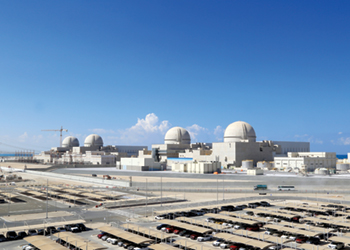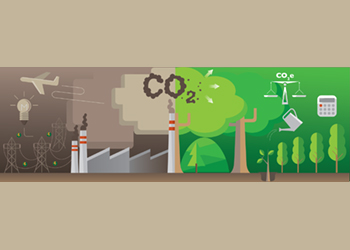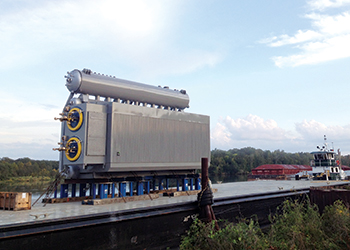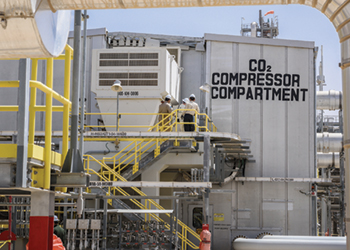
 Green hydrogen is likely be viewed more favourably than hydrogen derived from fossil fuels
Green hydrogen is likely be viewed more favourably than hydrogen derived from fossil fuels
Public and stakeholder perceptions of hydrogen storage are likely driven not only by views on safety concerns, but on the necessity and propriety of hydrogen in a net-zero energy system more broadly
The use of hydrogen as a fuel substitute for electricity, heating and transport has received growing attention, as a key contributor to a low-emissions future for many countries.
Within broader consideration of the place of hydrogen within an increasingly electrified and net-zero society, governments and regulators are turning attention to issues of storage and safety around hydrogen.
The emerging hydrogen industry is anticipated to be a large-scale business. Goal setting for use as energy, fuel or feedstocks include 5 GW hydrogen production capacity by 2030 for the UK.
Japan’s Sixth Basic Energy Plan likewise aims to increase hydrogen supply from approximately 2 million tonnes per year (tpy) in 2021 to up to 3 million tpy in 2030, and 20 million tpy by 2050.
There are a range of hydrogen technologies, including forms of hydrogen production, storage, transport, and use, each of which will have different associated risk perception issues.
The production of hydrogen for feedstock is a long-established technology, however, the novelty of hydrogen for energy is its widespread application for greenhouse gas (GHG) emissions reduction.
There are different hydrogen feedstocks and processes to produce hydrogen. The most common production technology is steam reforming of natural gas, though hydrogen is also generated from coal gasification.
Carbon dioxide (CO2) is a significant by-product of fossil fuel derived hydrogen but could be reduced or mitigated via CCS to reduce its carbon intensity. There is potential for hydrogen generation via electrolysis using renewable energy (green hydrogen), offering hydrogen fuel with a low carbon footprint.
PERCEIVED SAFETY OF HYDROGEN
The uptake of hydrogen depends on public acceptance of and engagement with the changes that are being implemented, which must be designed to be in line with what the publics will tolerate, accept, or support.
Nonetheless, a key issue driving societal support is that of trust in operators to have the competence to deploy technologies safely and securely, including—for new subsurface technologies, which may enable a net-zero society—being able to understand geological complexity and work with uncertainty to avoid leakage.
These concerns are relevant both for communities adjacent to infrastructure and also for societal actors operating at a national or regional level.
While acceptance of new technologies is challenging at both a community and wider societal level, it is possible to draw parallels from other relevant technologies and developments such as the implementation of carbon capture and storage (CCS) and underground (natural) gas storage (UGS).
CCS and UGS industries demonstrate successes and failures that can provide lessons learned for future proponents of a hydrogen economy.
As hydrogen is rarely found as a free gas in "reservoirs" (like natural gas resources), other methods have been developed to isolate or generate hydrogen.
A range of countries are considering becoming hydrogen exporters, such as Australia, Norway, Brunei, and Saudi Arabia.
Japan and South Korea have developed formal, government-led strategies for transition to hydrogen imports (from LNG and other fuels).
So addressing all aspects of safety for the full value chain is becoming increasingly urgent.
Therefore identifying, understanding and communicating the perceived risks of storage as part of hydrogen utilisation becomes a critical factor in the adoption of (or pushback against) the emergence of the use of this fuel.
A paper by ‘Communicating Leakage Risk in the Hydrogen Economy: Lessons Already Learned from Geoenergy Industries’ focuses and draws on experience of public attitudes towards the safety of UGS and the geological disposal of CO2.
Highlighting the potential sensitivities for the hydrogen sector to consider going forward presented learnings about the perceived risks around gas leakage from CO2 storage and from UGS and experiences of communicating these risks, to identify potential risk perception issues that may arise in relation to the geological storage of hydrogen.
CO2, natural gas and hydrogen storage follows the same principles—the storage of gas in geological formations.
Hydrogen and natural gas are a valuable commodity, while CO2 has long been considered as a pollutant, a waste product and a cost.
However, this perception is in transition as more countries declare their net-zero targets and their related mechanisms for crediting emissions avoided. If hydrogen is used for domestic power, publics will be familiar with the gas and its use.
The fact that underground hydrogen storage offers temporary storage of a useful resource, and not a form of waste disposal (that is, intended to remain in the subsurface for geological timescales) may make hydrogen storage more acceptable to publics than CCS. However, there may be nuance in perception depending on the nature of the hydrogen produced.
COMMUNICATING LEAKAGE
‘Green’ hydrogen will likely be viewed more favourably than hydrogen derived from fossil fuels, given that this will reduce the CO2 emissions associated with hydrogen production and remove the need for CCS, which is viewed by more skeptical voices as unproven or unfeasible.
This reflects results of research conducted for CCS in the context of CO2-enhanced oil recovery, which found that public and opinion-shapers perceived storage less positively when it was viewed as enabling an activity regarded as harmful to the climate.
Reflecting CCS research evidence from Scotland suggests that NGOs view hydrogen production as allowing fossil fuel operators to give the impression of taking positive climate action and hence perpetuating harmful activities elsewhere.
In 2020, Friends of the Earth Scotland branded hydrogen as a "false solution" to climate change.
Similarly, empirical research has questioned the necessity of hydrogen in the UK’s heating goals, and positioned the technology as being pushed by a coalition of incumbent actors including the gas industry.
At a national level, it may thus be the case that public and stakeholder perceptions of hydrogen storage are driven not only by views on safety concerns, but on the necessity and propriety of hydrogen in a net-zero energy system more broadly.
The gases consider for geological storage gases (CO2, H2, and CH4) are all odourless and not visible, and so are difficult to detect with the human senses, but only CO2 classifies as toxic.
Humans tend to be more fearful of unseen or undetectable compounds such as gases. Public awareness of the properties of these gases is generally quite limited.
This low level of knowledge in itself means that it is difficult to predict perception of a hydrogen leak in comparison to CO2 or natural gas, since the lay public are likely not to know, for example, that hydrogen disperses more readily than CO2.
Nonetheless, initial research indicates that people can identify escaping odourised hydrogen at regulatory thresholds.
As for leakage from geological formations, hydrogen is a smaller and lighter molecule than natural gas and CO2 and could buoyantly leak more readily. But the small size of hydrogen molecules could lead to more tortuous pathways through the subsurface thus taking longer to travel.
While CO2 is injected for permanent disposal; hydrogen will have a comparatively short residence time in the subsurface formation, reducing likelihood of significant leakage.
That said, from a technical perspective, UGS and hydrogen storage could be regarded as more complex than CO2 storage.
The repeated injection and production cycles associated with these technologies and the resulting variable subsurface pressure pose enhanced uncertainty regarding the rock behaviour, and therefore the sealing capability of the different rock formations to prevent leakage over time.
Understanding deliverability (that is, cycles of injection and withdrawal) and impacts from the interplay of water drainage and replacement by gas, types of cushion gas, buffering and repressurisation are complex and still subjects of research into performance and financial viability of UHS.
However, these geological complexities are unlikely to be a major influence on public perspectives of leakage risk.
Rather, the same issues around how publics conceptualise the subsurface, that is, one of the present challenges for CCS, will likely be the same set of challenges for hydrogen and many other georesources.
Another learning to consider concerns monitoring and measurement. Since both methane and hydrogen are present at much lower concentrations in our atmosphere, they may be easier to detect above background, which has implications for ease of detection and monitoring.
These two gases might, therefore, be easier to monitor for and measure than CO2, where variations in background concentration due to natural processes can be problematic.
CONCLUSION
Risk perception is just one factor among many driving societal views towards new and potentially unfamiliar technologies such as geological hydrogen storage.
And research illustrates the importance of early and thorough consideration of societal issues prior to deployment of hydrogen storage in support of a potential future hydrogen economy.















































































.jpg)





































